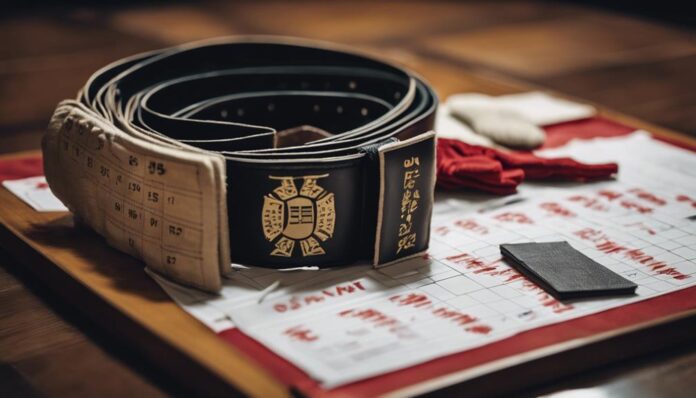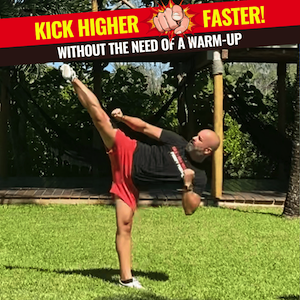You're over 40, and the years of martial arts training are catching up. It's time to reassess and adjust your approach to remain competitive and avoid burnout. As you age, your body undergoes significant physical decline, impacting your performance. SMART goals help you stay on track, focusing on specific, measurable objectives that align with your current physical condition. Unlike your younger self, you need to prioritize recovery, strength training, and flexibility. By acknowledging these changes and adapting your training, you'll guarantee sustainable progress and stay motivated – and by taking a closer look, you can access your full potential.
Key Points
- Align training goals with current physical condition and training history for over 40 fighters.
- Set SMART goals for specific martial arts techniques, like mastering a kata.
- Prioritize recovery times in training to reduce injury risk due to aging.
- Focus on sustainable progress rather than idealized performance over 40.
- Adjust training and nutrition to address physiological changes caused by aging.
Training Goals for Over 40
Your training goals as a fighter over 40 require careful consideration to ascertain you're making the most of your time in the gym. Setting SMART goals is vital to achieving success in your martial arts journey. This involves setting specific targets, such as improving technique in a particular martial arts kata or achieving a certain sparring duration without fatigue.
When setting your goals, make certain they're measurable, achievable, relevant, and time-bound. For instance, you can aim to increase the number of successful techniques executed during practice sessions by 20% over three months. This will help you track your progress effectively.
Achievable goals should consider your body's changing capabilities, focusing on realistic improvements in flexibility or strength rather than the same benchmarks set in younger years. Align your goals with your current physical condition and training history to ascertain they resonate with your personal motivations.
Create a time frame for achieving your objectives, such as preparing for a specific competition or testing within six months. This will create urgency and focus within your training regimen, helping you stay on track and achieve your goals.
Adjusting for Physical Decline
As fighters enter their 40s, an important consideration is the inevitable physical decline that comes with aging. Physiological changes, such as decreased VO2 max, begin to impact endurance and performance. When setting goals, it's important to acknowledge these changes and adjust your training program accordingly.
Aiming to maintain a healthy lifestyle is essential, as your body's set weight range can resist significant changes, making weight management more complex.
To adapt to physical decline, prioritize recovery times in your training program. As you age, your body takes longer to recover from intense training sessions, increasing the risk of injury and burnout.
Incorporate strength training and flexibility exercises to maintain muscular strength. Hormonal changes, such as decreased testosterone and estrogen, can affect muscle mass and recovery.
Tailor your approach to training and nutrition to address these changes.
SMART Goals for Martial Arts
Setting SMART goals in martial arts training is essential for fighters over 40, as it enables them to stay focused, motivated, and driven. A SMART goal is one that's Specific, Measurable, Achievable, Relevant, and Time-bound.
To set a SMART goal, you should start by identifying a specific area of your training you'd like to improve. This could be mastering a new kata, increasing your sparring speed, or perfecting a technique.
Next, you should define measurable objectives, such as shaving 30 seconds off your 1.5-mile run time or achieving 10 successful sparring rounds. Verify your goal is achievable and relevant to your martial arts aspirations. This means considering your physical capabilities and current skill level.
You should also set time-bound targets to create urgency and accountability. For example, you could set a goal to prepare for a tournament or grading within a specific timeframe. This will help drive consistency in your training efforts and verify you're continually improving.
Realistic Goals for Aging Fighters
The clock is ticking for aging fighters, with physiological changes like declining VO2 max starting in their 30s. As you navigate this phase, it's crucial to set realistic goals that acknowledge these changes.
Focus on holistic health rather than just weight loss, and emphasize achievable fitness targets that align with your individual capabilities and current fitness levels. Accept that some aspects of your body, like genetic factors influencing body shape, are unchangeable, and prioritize mental well-being.
To stay motivated, set specific, measurable, and time-sensitive goals. For example, aim to improve your sparring techniques or endurance within a defined timeframe.
Break down larger goals into smaller, manageable tasks to track progress effectively. Celebrate small victories, like mastering new techniques or increasing training frequency, to enhance engagement and sustain commitment to your long-term goals.
Sustainable Progress Over 40

Maintaining momentum as a fighter over 40 requires strategic planning and adaptability. As you navigate the challenges of aging, it's crucial to focus on sustainable progress rather than idealized performance levels. Setting SMART goals – Specific, Measurable, Achievable, Relevant, and Time-bound – can help you achieve this.
| Old Mindset | New Mindset |
|---|---|
| Focus on winning | Focus on improvement |
| Prioritize intensity | Prioritize consistency |
| Ignore injuries | Listen to your body |
| Focus on aesthetics | Focus on functional fitness |
| Train alone | Train with a community |
In Summary
You've made it this far, now it's time to reassess your training goals. As an over 40 fighter, you know physical decline is inevitable. Adjusting your approach is key to sustainable progress. By setting SMART goals, you'll focus on realistic objectives that prioritize technique over brute force. This tactical shift will help you maintain a competitive edge, reduce injury risk, and extend your fighting career. It's time to adapt and evolve – your body will thank you.



